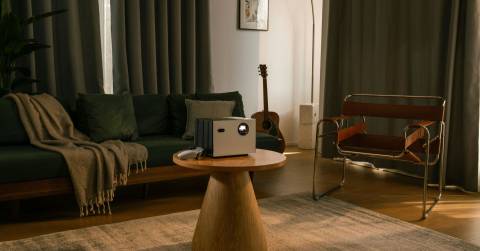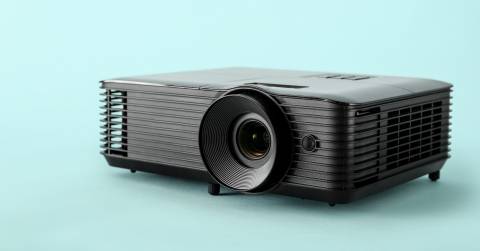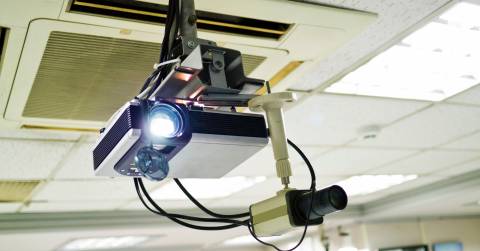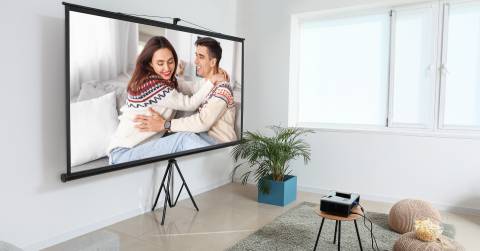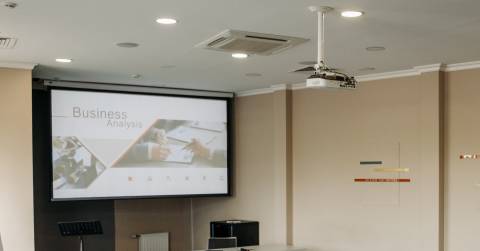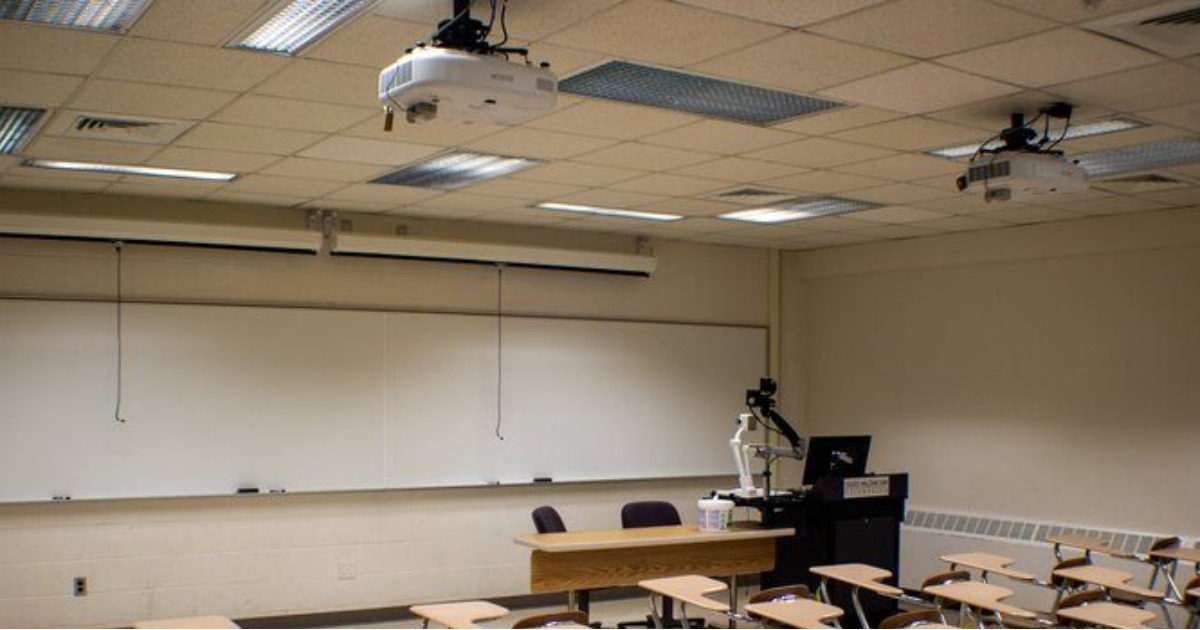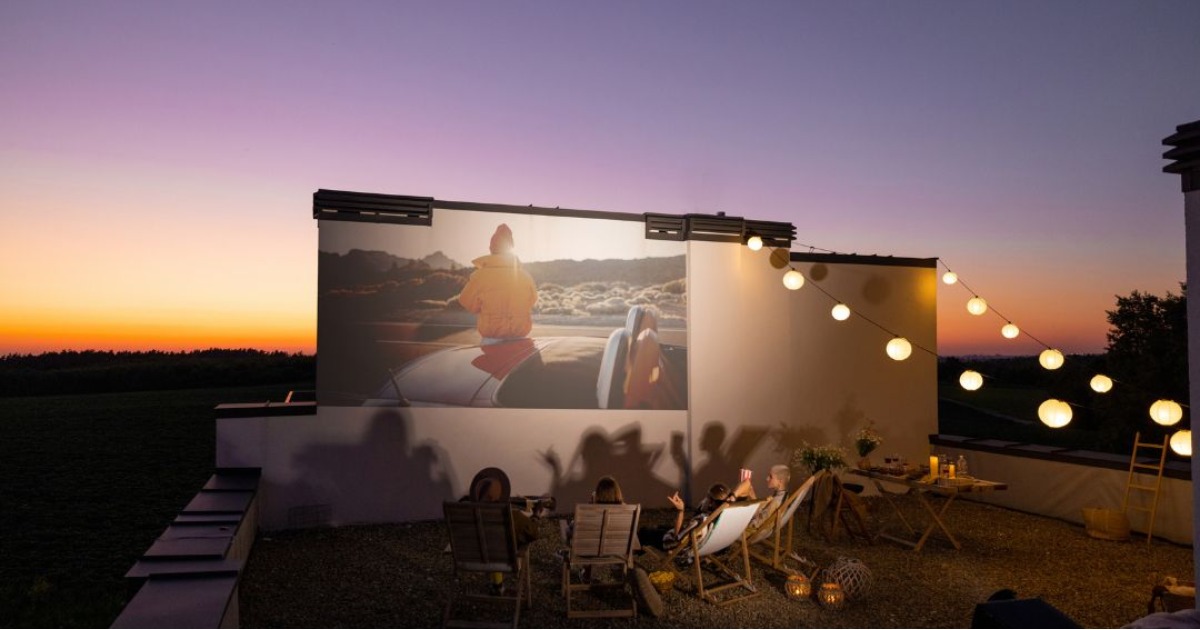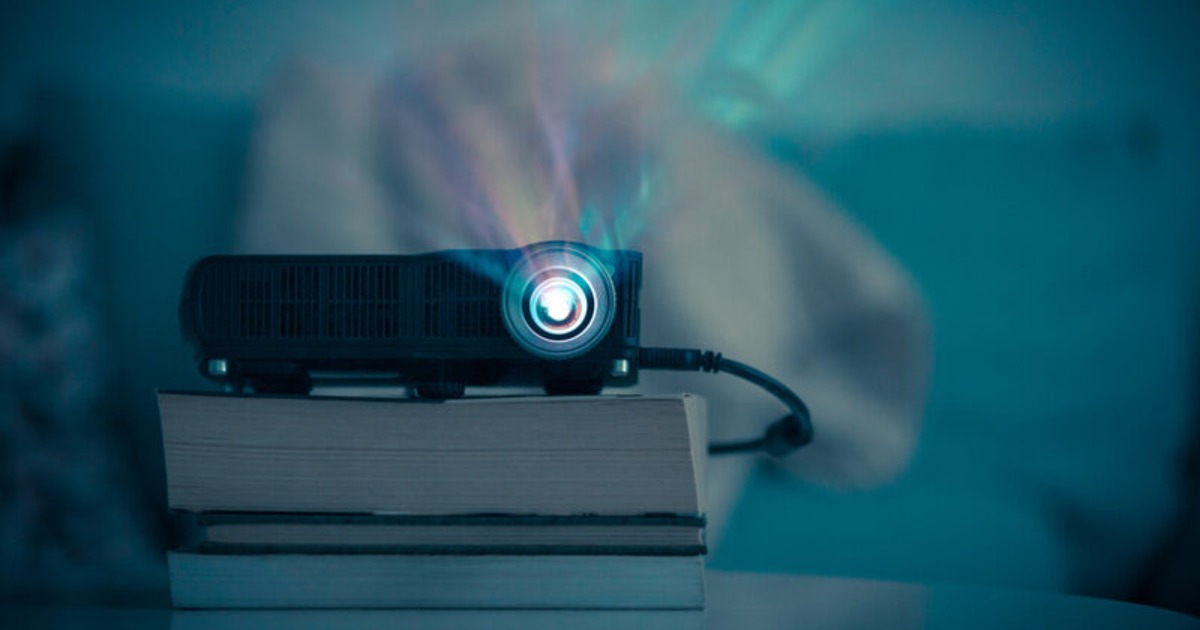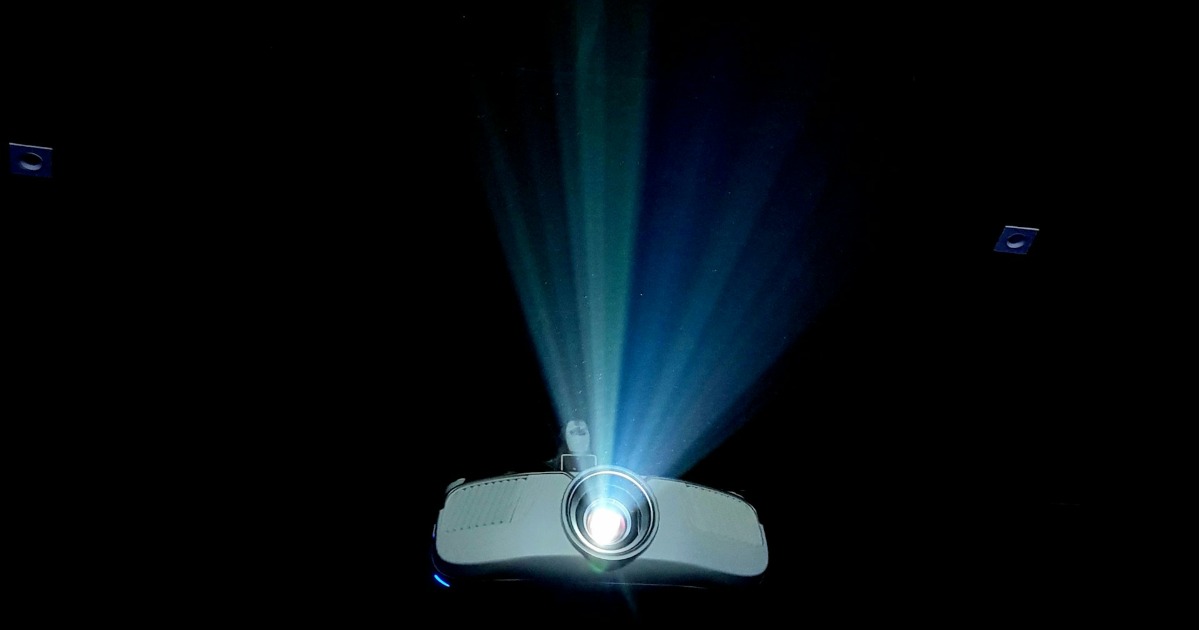The Best Epson Professional Projector For 2025
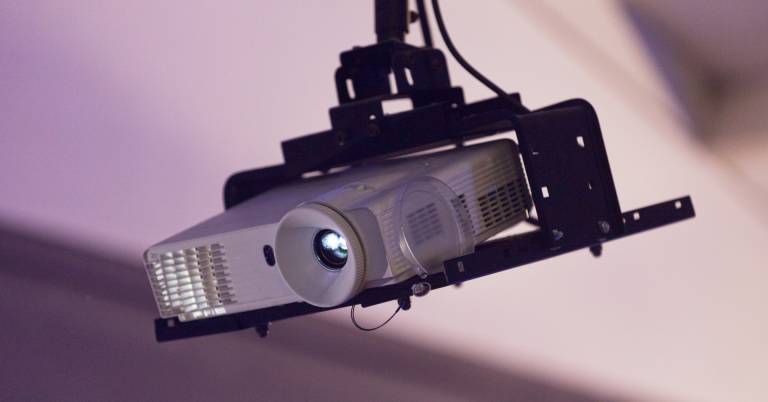
Summary
Epson PowerLite E20 Projector
Epson EpiqVision Flex CO-W01 Projector
Epson 3800 4K PRO-UHD Projector
When image quality, reliability, and performance are critical, Epson professional projectors consistently stand out as top choices for business, education, and large venue applications. Known for their precision engineering and advanced projection technology, Epson’s professional lineup offers vibrant color accuracy, high brightness levels, and versatile connectivity options—ideal for everything from boardroom presentations to lecture halls and live events.
But choosing the right projector depends on your specific needs. Do you need ultra-short throw capabilities for tight spaces? Wireless connectivity for easy setup? Or perhaps a laser light source for minimal maintenance?
To help you make an informed decision, we’ve researched the top-rated Epson projectors praised for their professional-grade performance. Our top pick is the Epson PowerLite E20 Projector, a bright and powerful projector that delivers exceptional clarity and long-term reliability. Below, we break down the best options to suit various environments, budgets, and presentation demands.
Our Top Picks
Bright 3,400 lumens output Advanced 3LCD color technology Built-in speaker for convenience Long 12,000-hour lamp life
Can heat up during extended use
The Epson PowerLite E20 is designed with education and professional use in mind, but its robust performance can easily carry over into home or business settings. It delivers consistent, true-to-life color and sharp imagery, even in well-lit rooms, thanks to Epson’s proprietary 3LCD technology and a brightness rating of 3,400 lumens. Whether you're presenting lesson plans, streaming educational content, or conducting meetings, it ensures your visuals are always seen clearly.
This projector also offers installation flexibility, making it easy to set up in different rooms or angles. It features HDMI connectivity for seamless connection with laptops, media players, or other AV equipment, and includes a built-in 5-watt speaker for quick setup without extra gear.
The only downside is that it can warm up slightly during longer sessions, but it is a minor trade-off for a projector that offers such solid and long-term performance. With a lamp life of up to 12,000 hours in Eco-mode, it's built for the long haul, making it a dependable choice for schools, offices, or home presentations.
Projects up to 300" image Bright and vivid 3LCD visuals Lightweight and travel-friendly Simple HDMI streaming support
Menu navigation is a bit tricky
The EpiqVision Flex CO-W01 strikes a unique balance between performance and portability. With up to 3,000 lumens of brightness and Epson’s advanced 3LCD color technology, it produces crisp, vivid images even in rooms with ambient light, making it suitable for daytime meetings or casual living room setups. Unlike many single-chip models, it shows 100% of the RGB signal in every frame, so colors stay accurate without rainbow effects or dimness.
Its lightweight design makes it easy to transport, whether you're heading into the office or out on a weekend trip. The projector includes a built-in speaker for simple audio output and an HDMI port for plug-and-play compatibility with popular streaming sticks like Roku, Fire TV, or Apple TV. It's also a handy tool for virtual calls, displaying life-sized video chats with friends or colleagues.
One minor drawback is that the on-screen menu system can feel a bit clunky at first, especially when you're trying to make quick adjustments. But once you’re familiar with it, navigation becomes smoother. Overall, for those wanting an all-purpose projector that performs well both professionally and personally, the CO-W01 delivers flexibility with quality to match.
PRO-UHD 4K with pixel shifting Accurate 3-chip 3LCD color output Full 10-bit HDR and smooth tone mapping Precision lens with lens shift adjustment
Fan noise can be slightly loud
The Epson 3800 takes a different approach to 4K by leveraging PRO-UHD pixel-shifting technology that enhances native resolution without sacrificing color accuracy or motion performance. Its true 3-chip design ensures every frame displays 100% of the RGB signal, eliminating the “rainbow effect” seen in some other projectors. This makes for a bright, natural, and fatigue-free visual experience, even during long viewing sessions.
With support for full 10-bit HDR and 12-bit analog-to-digital video processing, this projector brings out depth and realism in both dark and bright scenes. The result is smooth tonal gradation and crisp detail across every frame. A 100,000:1 contrast ratio and 3,000 lumens of color/white brightness further enhance black levels and highlight detail, even in moderately lit rooms.
Installation is also made easy with a multi-element precision lens, vertical and horizontal lens shift, and wide zoom capabilities. And for simple setups, the built-in 10W stereo speakers are a convenient touch. Although the fan can be slightly loud during high-performance use, it is not a big deal. For those who want sharp, detailed, and deeply immersive visuals, the Epson 3800 proves to be a worthy centerpiece of any home theater setup.
Bright 3,400 lumens output Crisp native 1080p resolution Automatic keystone correction Dual HDMI ports for versatility
Limited Fire TV remote support
The Epson 1080 Projector delivers a truly immersive experience, thanks to its native 1080p resolution and 3,400 lumens of color and white brightness. Whether you're catching a midday game or watching a thriller at night, this projector keeps visuals consistently clear, crisp, and vibrant. Epson’s 3-chip 3LCD technology ensures 100% RGB color accuracy on every frame—eliminating the “rainbow effect” and dull tones that often appear in single-chip alternatives.
Gamers and sports fans will appreciate the fast data processing, which keeps motion smooth and responsive. The built-in picture skew sensor automatically adjusts the image for a perfect rectangle. With two HDMI ports, you can easily connect a streaming stick, Blu-ray player, or gaming console, and the built-in speaker simplifies setup without the need for external audio.
Nevertheless, some Fire TV remote functions may not fully sync with this projector. However, once your device is connected, you’ll still be able to stream seamlessly and control your content manually or with alternate remotes.
Powerful 4,000 lumens brightness Full HD resolution with 3LCD clarity Wireless screen mirroring with Miracast Simple setup with image correction tools
The built-in speaker may not be sufficient for larger rooms or groups
The EX9240 isn’t just bright, it’s ultra-bright. With 4,000 lumens of both color and white brightness, it delivers rich visuals even in fully lit rooms. Whether you're projecting dense spreadsheets or high-definition videos, the Full HD 1080p resolution ensures everything appears crisp and detailed. Thanks to Epson’s 3-chip 3LCD tech, you also get color fidelity that avoids the rainbowing or dimness found in some competing models.
What really makes this projector impressive for modern users is its wireless connectivity. With built-in Miracast, screen mirroring is simple and seamless, and dual HDMI ports support just about any streaming or AV device, whether it’s a Fire TV Stick, Roku, Apple TV, or a video conferencing setup.
Setup is intuitive, with features like a horizontal slider, automatic vertical keystone correction, and 1.0–1.6x optical zoom for flexible placement. The built-in 16W speaker is decent for casual use or small rooms, but for larger audiences, connecting an external audio system will give you the fuller soundstage the visuals deserve.
Laser light source, no bulb needed Ultra-bright 4,600 lumens output Projects up to 300" in size Seamless Miracast screen mirroring
Premium price for high-end features
The Pro EX11000 brings laser projection to the business and education world with precision. With a stunning 4,600 lumens of brightness for both color and white light, it’s made to perform in bright meeting rooms and lecture halls where clarity can’t be compromised. Thanks to its 3-chip 3LCD technology, colors remain vibrant and true-to-life across every frame, with no distracting rainbow effects or brightness dips.
It has a virtually maintenance-free laser light source, rated for up to 20,000 hours. That means no bulb replacements and minimal downtime, making it a cost-effective choice in the long run for high-use environments. With wireless screen mirroring via Miracast and multiple HDMI ports, it's also built for seamless connectivity to streaming devices or video conferencing gear. Setup is quick, with intuitive tools like optical zoom, horizontal image alignment, and automatic keystone correction. The built-in 16W speaker offers solid onboard audio, which is perfect for medium-sized groups.
While its advanced capabilities place it at a premium price point, the investment makes sense for users needing high-quality, large-scale projection with minimal maintenance and maximum flexibility.
Full HD laser projection Built-in Google TV access Automatic focus and alignment Dolby stereo speakers included
Bluetooth can lag slightly
Designed for ease and elegance, the EF21 turns almost any space into a cinema. It delivers a crystal-clear Full HD image up to 150 inches, powered by Epson’s laser-array technology and 3LCD engine, ensuring vivid color accuracy and consistent brightness. With 1,000 lumens for both white and color brightness, it performs well in dim to moderately lit environments, offering great flexibility from day to night.
What sets the EF21 apart is its portability and smart integration. Built-in Google TV gives you instant access to over 10,000 apps—including heavy hitters like Netflix, YouTube, and Disney+—while the EpiqSense tech automatically resizes and focuses your projection for a seamless viewing experience. Its internal Dolby stereo speakers handle sound better than expected for a unit this size, reducing the need for external audio in small to mid-sized rooms.
Nonetheless, the Bluetooth connectivity can occasionally lag, especially when pairing with certain speakers. However, this doesn’t impact video playback, and most users still enjoy smooth audio with wired or HDMI-connected solutions. For effortless setup, modern streaming, and a clean visual punch, the EF21 brings the fun wherever you take it.
More To Consider
4K PRO-UHD with HDR support Bright 2,800-lumen picture quality Ultra-low input lag for gaming Built-in Android TV with voice remote
No manual included
The 2350 4K PRO-UHD makes a strong case for turning your living room into a cinematic hub. Using Epson’s enhanced pixel-shifting technology and HDR10/HLG support, it renders impressive depth and detail in both bright and shadowy scenes. You’ll get a vivid, lifelike picture across a massive display thanks to 2,800 lumens of both color and white brightness.
It also shines as a gaming companion. With input lag under 20 ms, the 2350 supports fast-paced action from current-gen consoles without noticeable delay. The integrated Android TV interface gives you direct access to all your favorite streaming apps—Netflix, Disney+, YouTube, and beyond—complete with Google Assistant voice control for smooth navigation.
While it’s packed with features, one small oversight is that the projector doesn’t come with a manual. Though most users can easily access the digital version online, having one in the box could’ve made setup more beginner-friendly. Still, for those wanting big-screen brilliance with smart features built in, the 2350 is a compelling all-in-one solution.
Our Tips to decide which one among best epson professional projector is the best
Researchers all know how difficult it is to make a decision when there are so many options. It's something that originally stood out, and you want to get the most bang for your buck, but our advice will help you make good decisions.
Before making a purchase, please read the following key factors to save oneself time and prevent trouble later.
Contrast Ratio
Contrast ratings can only be used to measure in dark rooms. They don't give any information about ambient lighting. Unusually dark blacks in the projector will result in lower contrast. A brighter projector will perform well in home theaters, but not in living rooms or offices.
Projection Tech
DLP projectors with single-chip DLP chips could be subject to the so-called "rainbow effect." Sometimes, tiny, bright flashes with rainbow-like colors may appear, especially in dark scenes. Some DLP projectors have a minimal effect, while others can produce a distracting result, especially when there are bright areas against shady backgrounds. The rainbow effect is not a problem with LCD projectors, which are safer if someone in your household has sensitive eyes. There are many DLP projectors that produce excellent images.
Brightness
The ambient lighting level, size and material of your projector screen will all affect the brightness. You should buy a professional seller if you are installing a projector in a permanent location, such as at your home, to ensure that you get the best image brightness and the correct screen material.
Portability
Connection Methods
Component video, composite video and S-Video all make up the most common connections on large projectors. We're also seeing more projectors that offer direct USB connection to computers via a USB cable. A growing variety of projectors now have USB Type-C ports. The majority of USB-C ports can be used to transfer data or video using the DisplayPort protocol. Most USB-C ports support USB Power Delivery (USB PD), which means that a plugged in projector can supply 100 watts of power to charge a device or to charge it using a USB-C cable (assuming the device is capable of charging over USB-C).
Resolution
The calculation for projectors that have 4K ultra high definition (3,840 x 2,160 pixels) is slightly different.
Light Source
For longer periods of time, LEDs and lasers retain a greater percentage of their original brightness. While all light sources eventually lose their brightness, lamps lose the most in 500 hours. Then, they slowly decline over time. The brightness of LEDs and lasers will decrease more slowly over the course of their lifetimes.
FAQs
1. What makes Epson professional projectors different from consumer models?
Epson professional projectors offer higher brightness, better resolution, advanced color accuracy, and more durable components, making them ideal for business, education, and large venues.
2. Are Epson professional projectors good for large venues or auditoriums?
Yes. Many models, like the Epson Pro L series, are specifically designed for large spaces, delivering high lumen output, sharp image clarity, and long-range projection capabilities.
3. Do Epson professional projectors support wireless connectivity?
Yes. Many models come with built-in Wi-Fi or support wireless modules, allowing for seamless presentations without the hassle of cables.
Conclusion
Follow these guidelines to ensure that you purchase best epson professional projector in 2025. Take into account what characteristics are most essential for your topmost issue right now, and then look into different products that meet those requirements. If you are unable to choose a product, please see EPSON 2350 4K PRO-UHD for another option.
With this advice, you should be able to find a great new product with much less difficulty! Do you have any inquiries? Please notify us as soon as possible.













